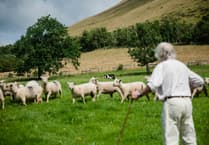Members of the public are being asked to help track down one of Britain’s rarest native trees in a race against time to protect it from extinction.
Bannau Brycheiniog National Park has launched an urgent appeal to identify and record Black Poplars – a once-common species that has become the most endangered native tree in the UK.
It is now estimated that fewer than 7,000 native Black Poplars remain across the UK. In Wales, the situation is even more critical, with only 200 Black Poplars left, only a handful of which are female.
The initiative is part of a wider conservation project being delivered by Bannau Brycheiniog National Park in partnership with Stump Up for Trees, the Woodland Trust and National Trust, and supported through Sustainable Landscapes Sustainable Places. It is also receiving expert input from Herefordshire Wildlife Trust and colleagues in Eryri National Park.
“Through this collaboration, we are mapping and recording existing Black Poplars in the National Park and surrounding areas,” said Sam Harpur, Woodland Officer for Bannau Brycheiniog.
“Cuttings, especially from female trees, are being grown at nurseries like those at Penpont Estate, funded by the Brecon Beacons Local Nature Partnership, to ensure the replanting and long-term conservation of this species.”
Black Poplars (Populus nigra subsp. betulifolia) were once a common sight along riverbanks and floodplains, but changes in land use, tree felling, and the introduction of hybrid poplars have all contributed to their dramatic decline. The historical removal of female trees – whose fluffy seeds were seen as a nuisance – has had a devastating impact on their ability to reproduce in the wild.
The species is now on the brink, but conservationists believe there is still time to turn things around.
To support the conservation effort, members of the public are being asked to report any sightings of suspected Black Poplars by taking a photo, recording the location, and emailing the details to [email protected].
Correctly identifying the trees can be tricky, but the National Park has offered some guidance to help spot them. Key features include rough, fissured bark, a leaning trunk, arching lower branches, and burrs – large rounded growths on the trunk. In spring and summer, female trees produce distinctive fluffy cotton-like seeds, while male trees have red catkins and females green.
Other clues include young leaves with hairy stems – best seen with a magnifying glass.





Comments
This article has no comments yet. Be the first to leave a comment.